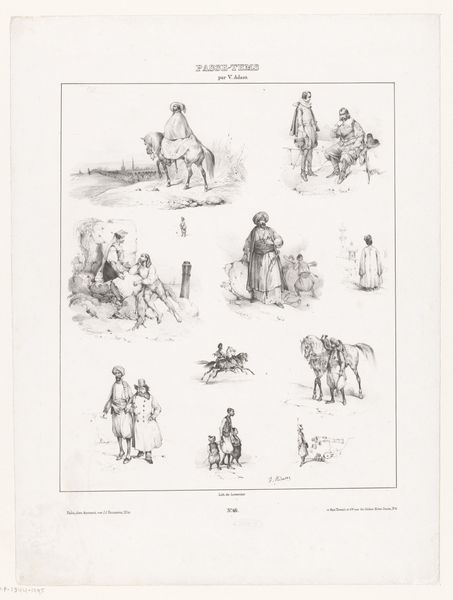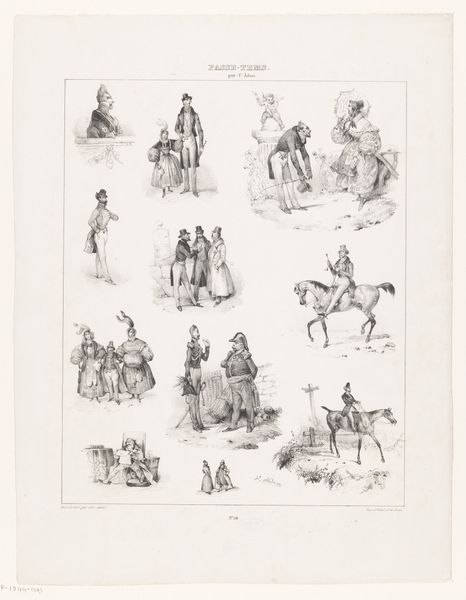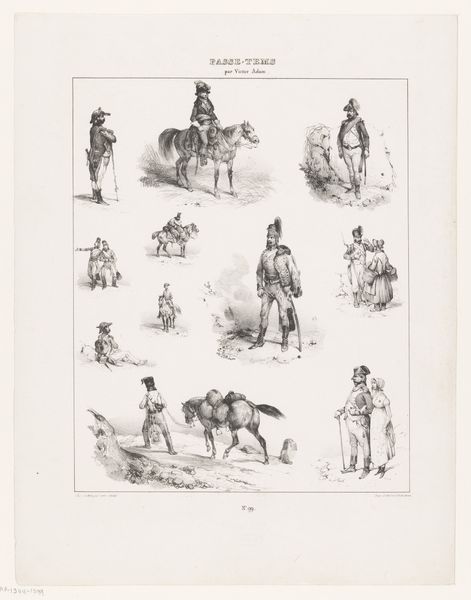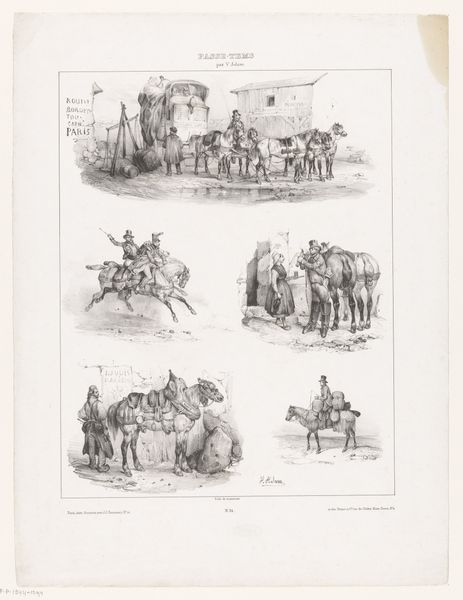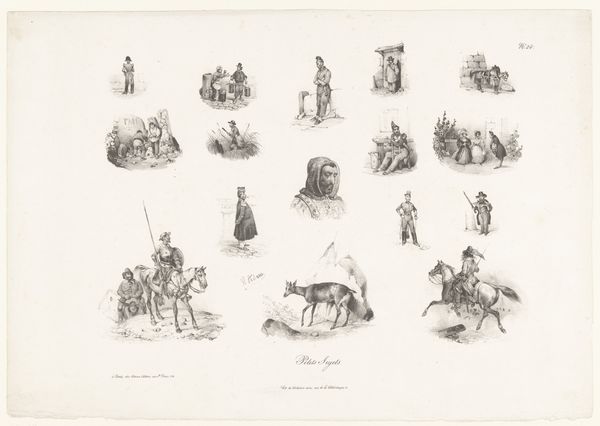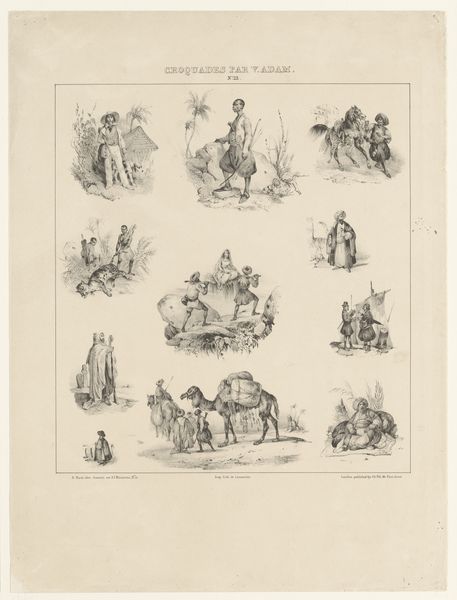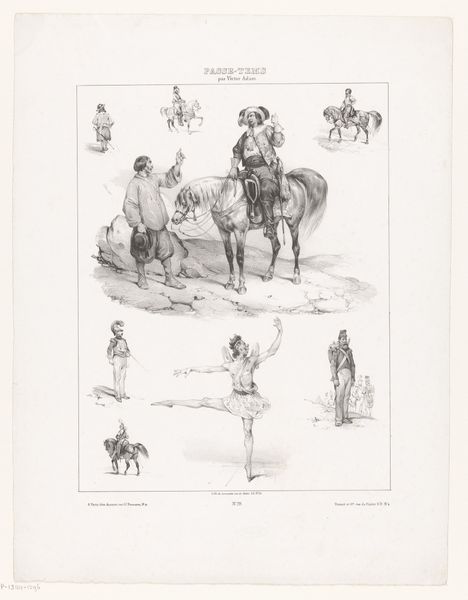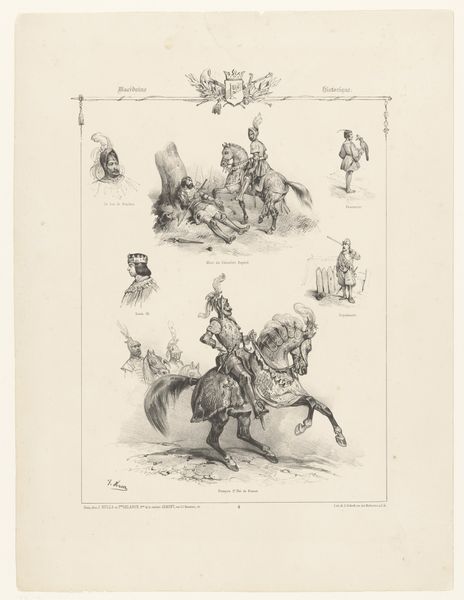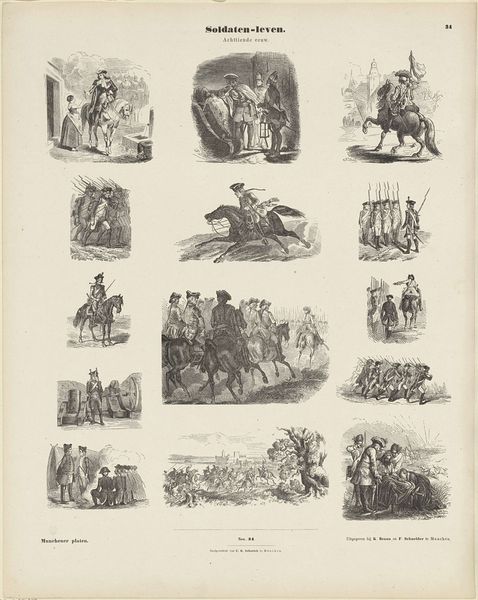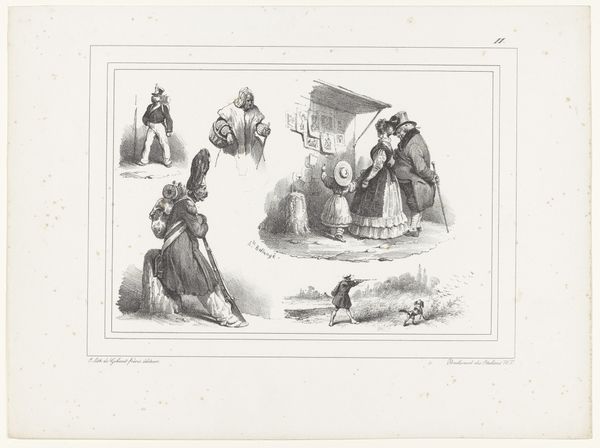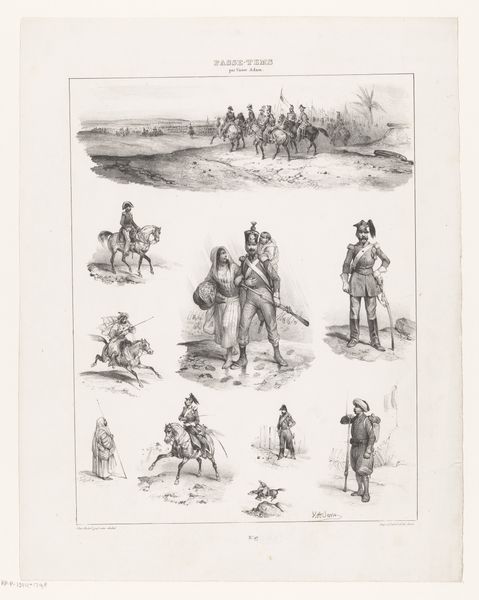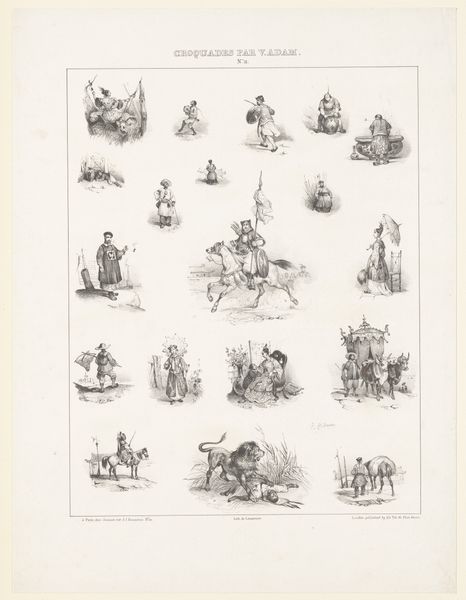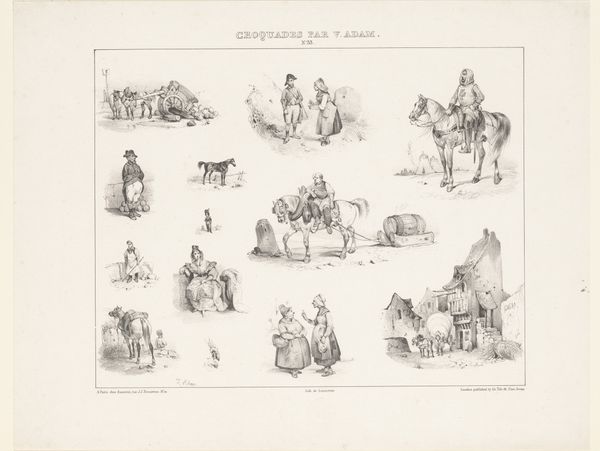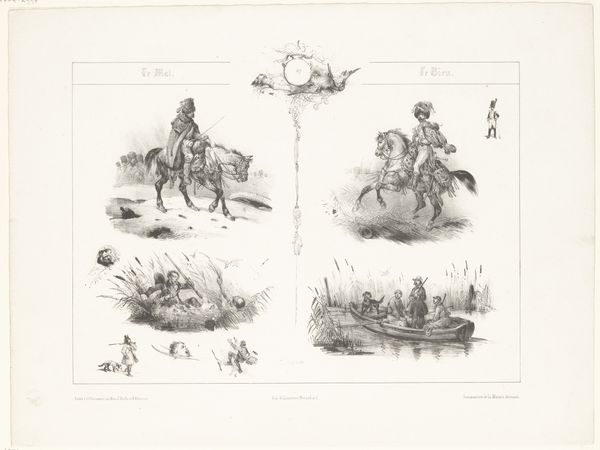
drawing, lithograph, print
#
drawing
#
narrative-art
#
lithograph
# print
#
romanticism
#
genre-painting
Dimensions: height 359 mm, width 277 mm
Copyright: Rijks Museum: Open Domain
Curator: This lithograph by Victor Adam from 1837, titled "Negen voorstellingen van menselijk tijdverdrijf," which translates to "Nine representations of human pastimes", offers a fascinating snapshot of 19th-century life. It's currently held here at the Rijksmuseum. What are your initial thoughts? Editor: It feels a bit like flipping through someone's sketchbook! There's a certain charm to seeing all these figures so closely packed, a collage of humanity from a bygone era. Melancholy hangs over them. Do you get that? Curator: Absolutely! Adam was quite adept at capturing the essence of Romanticism. Though on its face, a seemingly straightforward collection of genre scenes, a careful read shows something beyond pleasant vignettes. The Romantic movement wasn’t simply about pretty landscapes, it was also about revealing deep emotions. Editor: That melancholy links directly to the changing roles, uniforms and class that Romanticism reveled in depicting, almost always in contrast with scenes from the past. Even the inclusion of those uniforms, the clear marking of hierarchy in the work, has an impact, especially when considering who gets to engage in leisurely “pastimes”. Curator: Precisely! It acts as social commentary as much as artistic endeavor. Notice the details. The posture of each figure and the expressions Adam gave them invite us to consider their social standing. In some ways, the images echo those found in the wildly popular ‘Physiognomy’ guides that sought to define types through illustration and word. Editor: And let’s not forget the power dynamics, inherent in these illustrations. The riders versus the footmen, and the apparent, casual indifference displayed, reveals social inequalities deeply rooted within these seemingly mundane activities. Curator: That contrast truly resonates. The romanticized settings serve almost as a smokescreen, don't they? Perhaps Adam intended to highlight these disparities or just represent life as it was in those moments, for those who could enjoy it at their leisure? Editor: Or perhaps he sought both— a simultaneous critique and document of his era’s paradoxes. Art's potential for multi-layered reading is truly enduring, and its significance continues to grow across time. Curator: Indeed, and Adam's "Nine Representations of Human Pastimes" is a beautiful reminder of that. I hope you have enjoyed our time reflecting on this gem today.
Comments
No comments
Be the first to comment and join the conversation on the ultimate creative platform.
